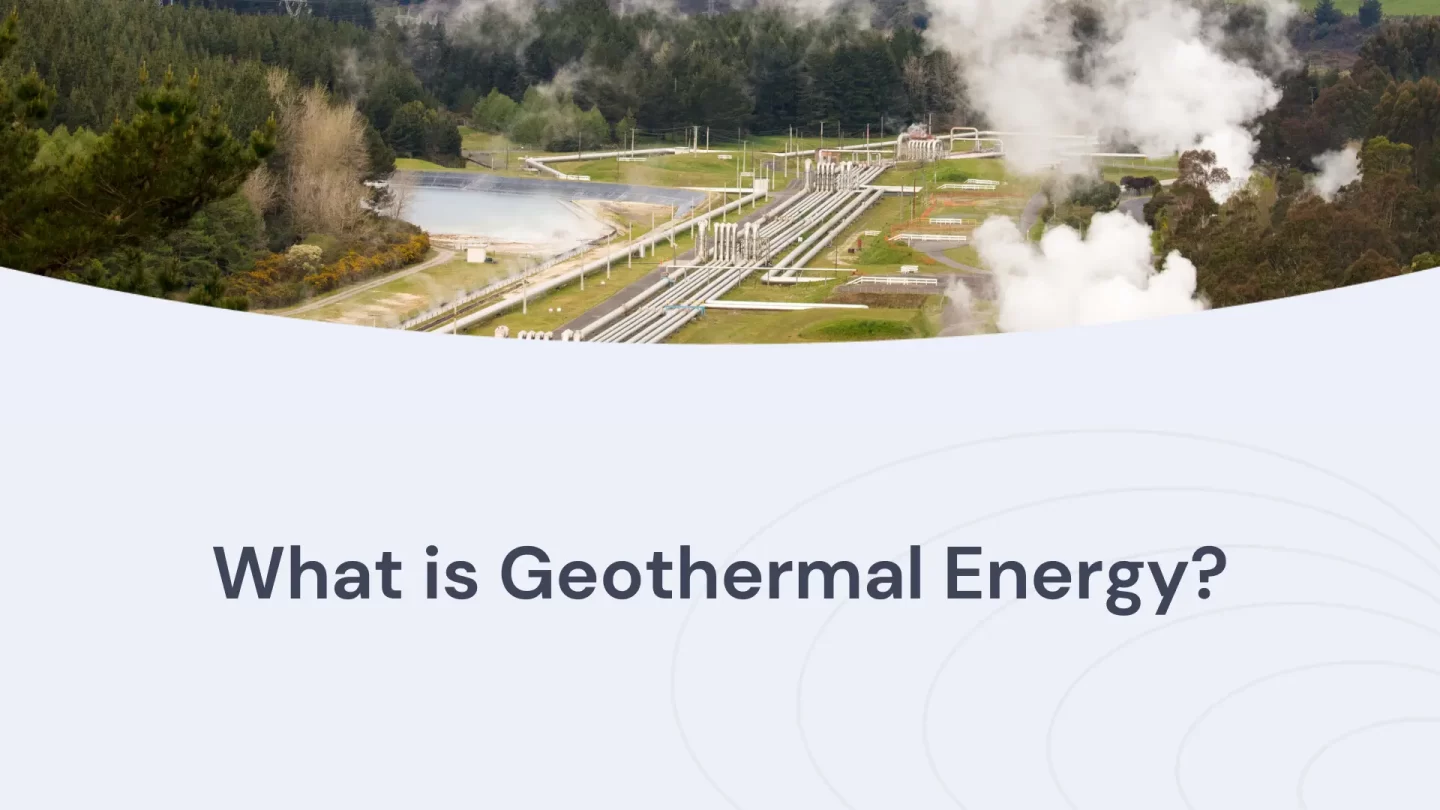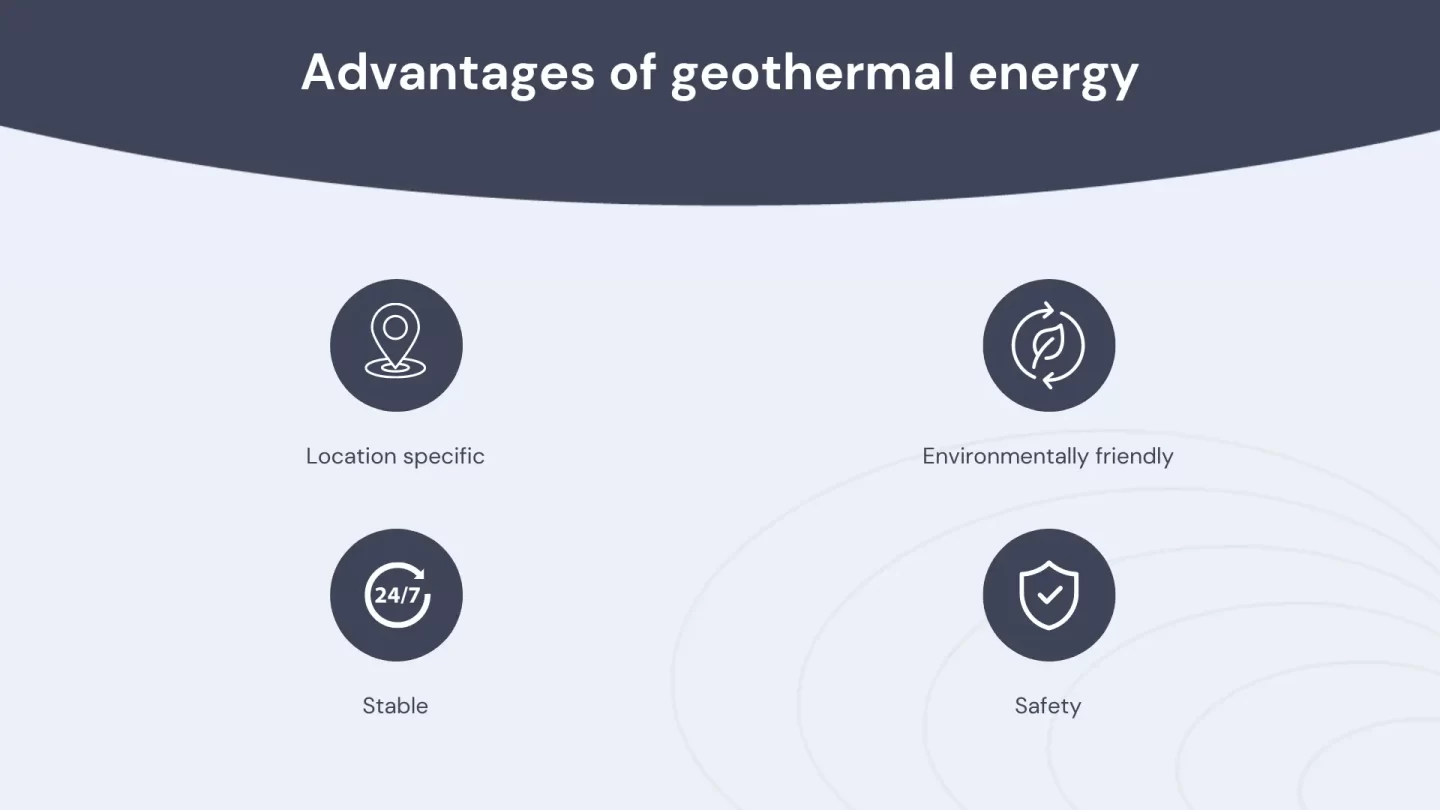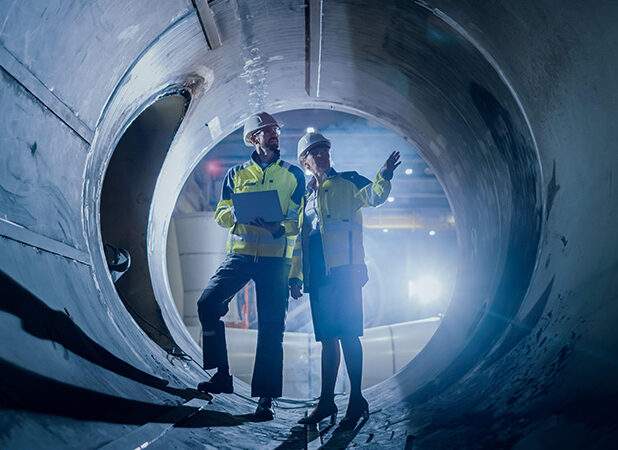What is Geothermal energy?
Geothermal energy comes from the natural heat of the Earth’s core and serves as a renewable and sustainable energy source because it does not produce greenhouse gases and is available in many areas around the world. The Earth’s incredibly hot interior can harness heat to generate electricity or provide heating for homes and buildings.

Purpose of geothermal energy
Geothermal energy is typically used for heating and cooling purposes in homes and buildings. A geothermal heating and cooling system uses the stable underground temperature to provide heat in the winter and cool air in the summer. In this type of system, installers put pipes in the ground that circulate water to transfer heat or coolness to the building. Geothermal heating and cooling systems can be very efficient and can save homeowners money on their energy bills over time.
Geothermal energy can also generate electricity. In this process, operators extract steam or hot water from the Earth’s core to power turbines, which then generate electricity. They can source the steam or hot water from geothermal reservoirs, where the Earth’s core naturally heats the water, or by drilling into hot rocks to access the heat.
Advantages and disadvantages
One of the advantages of geothermal energy is that it is available 24/7, unlike solar or wind energy which can be intermittent. It does not produce greenhouse gases or other pollutants that can harm the environment. Additionally, sourcing it locally reduces the need for fuel transportation and lowers the carbon footprint of energy production.

Despite these benefits, the development of this type of energy can be costly, as it requires significant infrastructure and drilling to access the heat from the Earth’s core. However, as technology improves and more research is done, it has the potential to become a more widely used and affordable energy source in the future.
Conclusion
In conclusion, geothermal energy is a renewable and sustainable energy source that has the potential to provide heat and electricity to homes and to play a significant role in reducing greenhouse gas emissions and improving global sustainability.
Frequently asked questions
Geothermal energy, a renewable and sustainable energy source, generates power by tapping into the Earth’s natural heat. By extracting steam or hot water from the Earth’s core and using it to power turbines, it can generate electricity. It also serves for heating and cooling homes and buildings.
One of the advantages of geothermal energy is its constant availability, 24/7, unlike solar or wind energy, which can be intermittent. It produces neither greenhouse gases nor other pollutants that harm the environment, and local sourcing reduces the need for fuel transportation. However, it can be costly to develop, requiring significant infrastructure and drilling to access the Earth’s natural heat.
Geothermal energy has the potential to provide a renewable and sustainable source of heat and electricity, which can help reduce greenhouse gas emissions and improve global sustainability .As technology improves and research continues, the potential for geothermal energy to become a more widely used and affordable energy source in the future increases.






